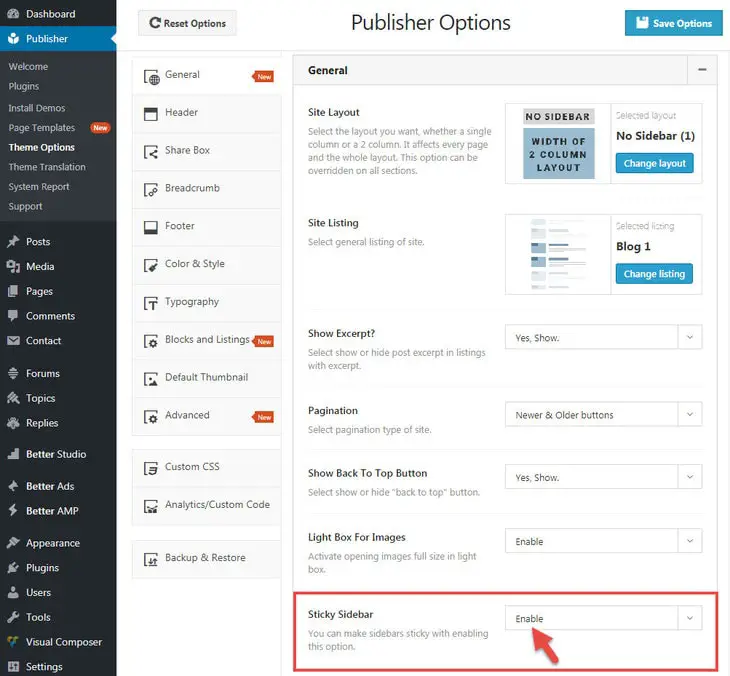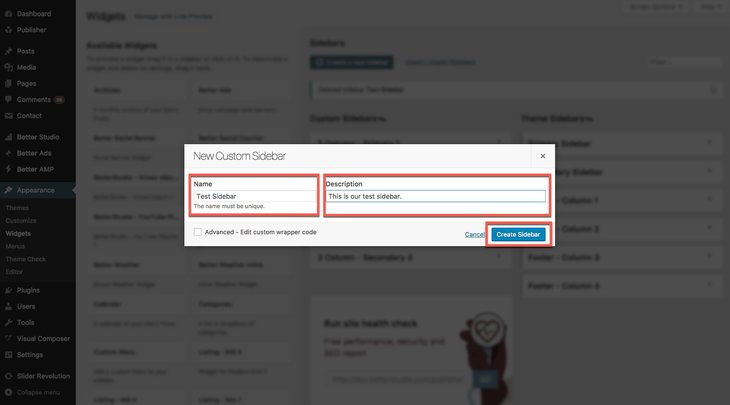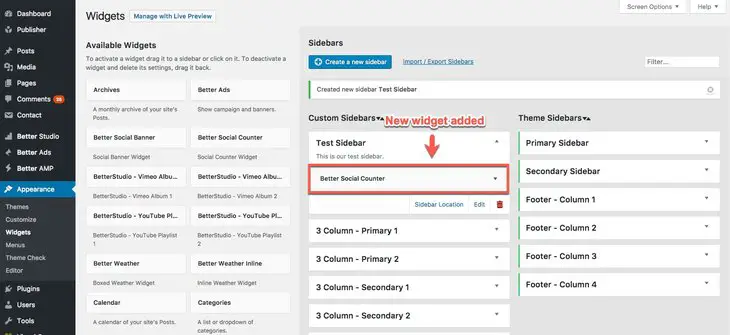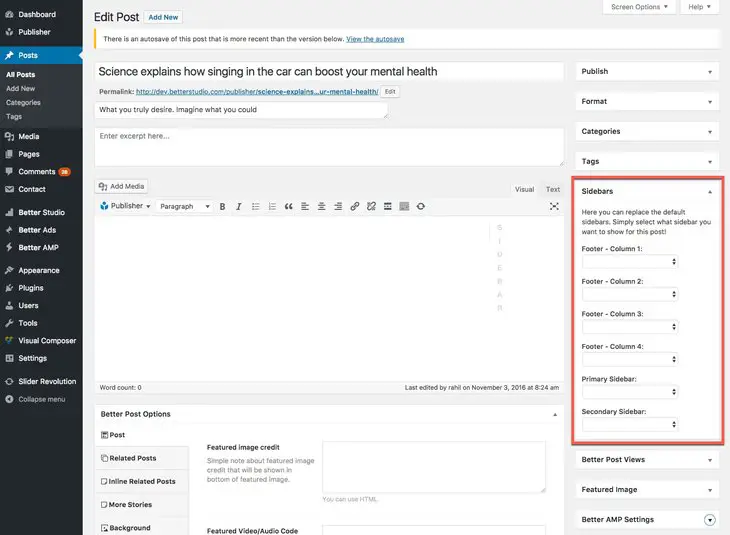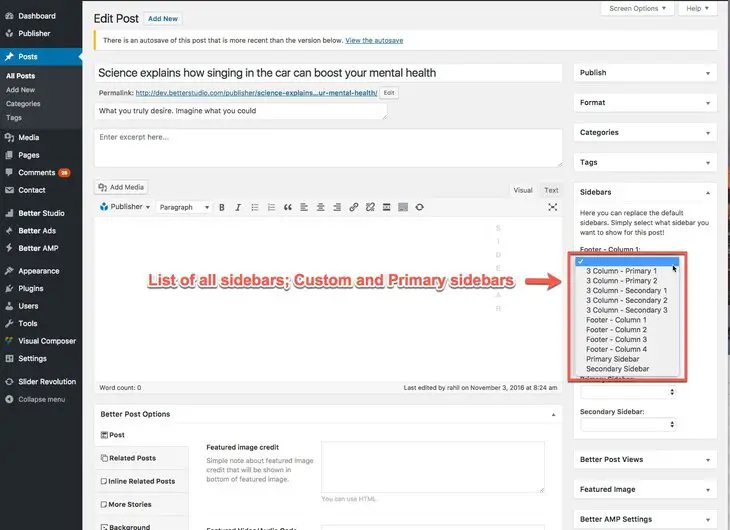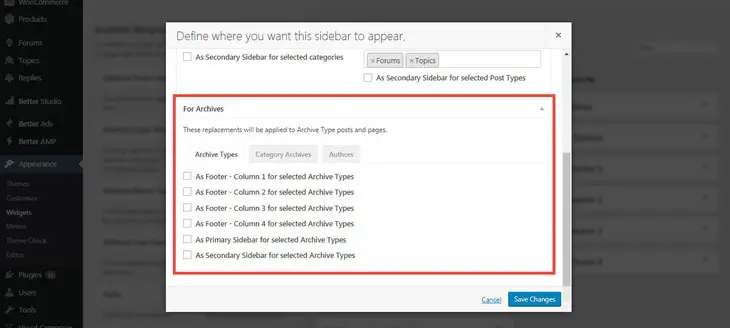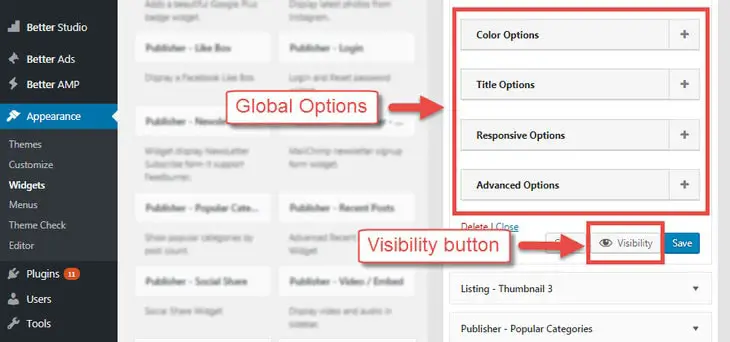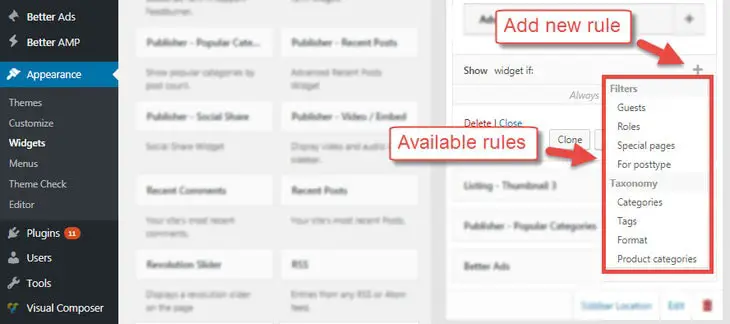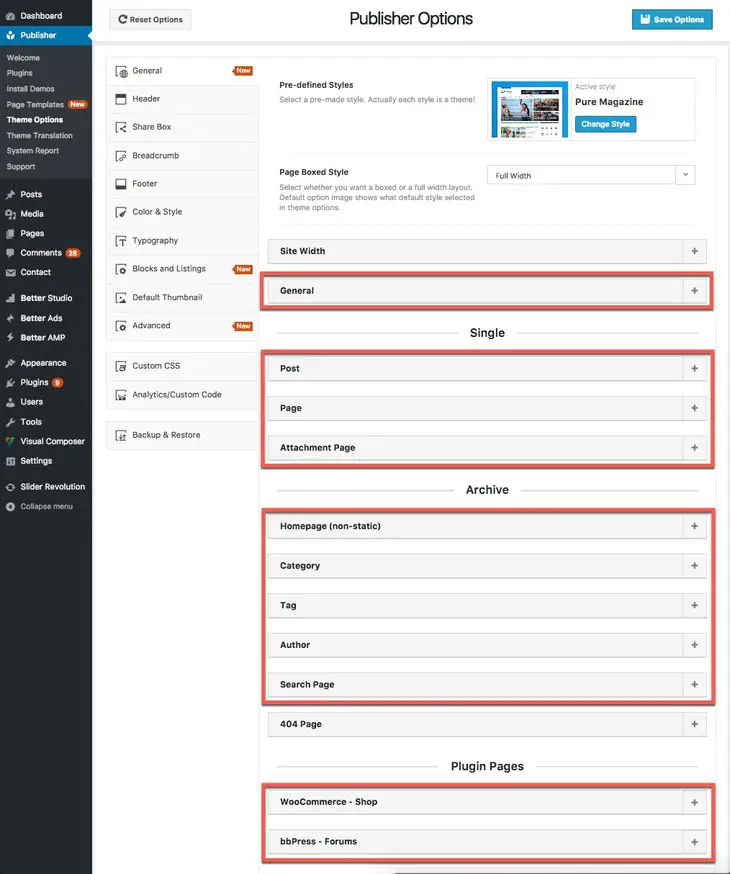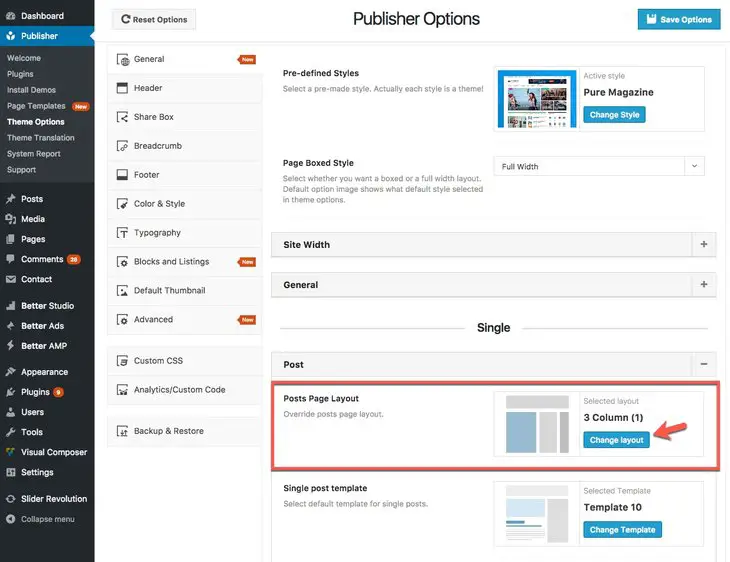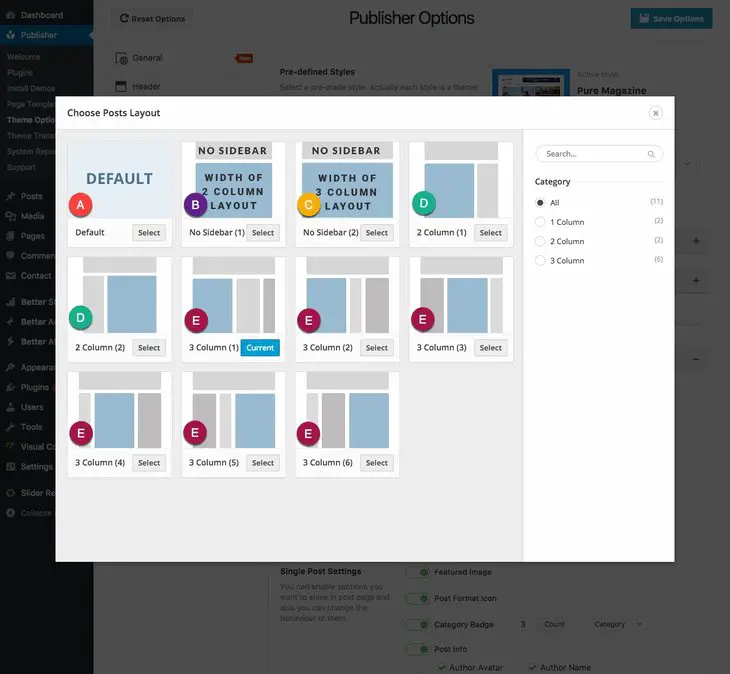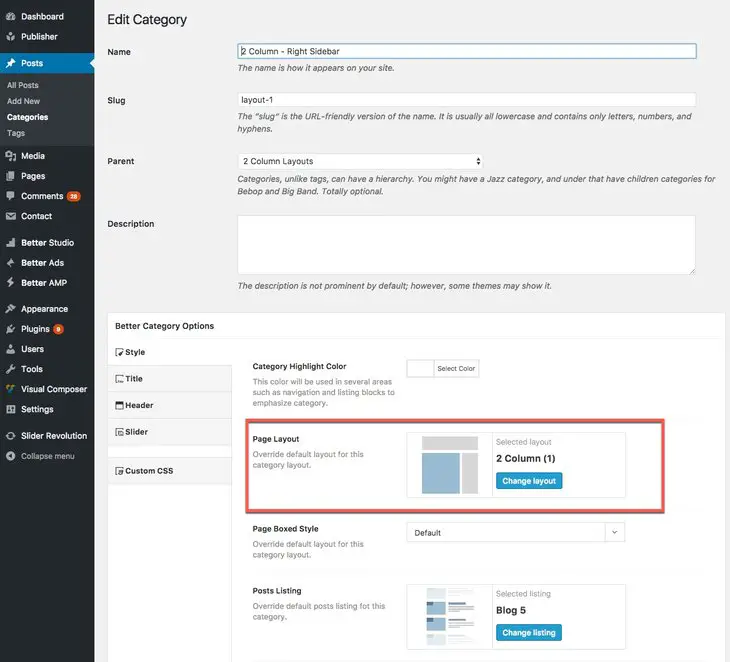What is Sticky Sidebar?
Let’s say you have a 500px high sidebar and your page height is 2000px, what happens if you scroll the page 1000px? Yes there would be no sidebar and just a blank space at side of the page. By activating Sticky Sidebar, your sidebars become intelligent, stick to the page and never leave it! Scroll through Publisher Demo and observe sidebars behavior.
How to Activate Sticky Sidebar?
Go to Publisher → Theme Options → General → General → Sticky Sidebar, click on the drop-down menu and select Enable.
Click Save Options and you are done, sidebars are sticky now.
Sticky Columns in Visual Composer
For adding this feature to Visual Composer columns, click on edit icon in top of columns and in opened popup add sticky-column class to the Extra class name field and save changes.
 NOTE: Be careful when your make Visual Composer blocks sticky; Sticky is for sidebars, if you make main content block sticky, it may interfere with other elements.
NOTE: Be careful when your make Visual Composer blocks sticky; Sticky is for sidebars, if you make main content block sticky, it may interfere with other elements.
Caution: Do not use Google Adsense in sticky blocks. If Google knows about it, your website gets penalty; the penalty could be banning your website from Google Ads system. Decreasing your organic search percent might be another consequence (not confirmed). Generally, make sure your ad system is OK with using ads in sticky blocks. Otherwise, do not use ads in sticky blocks.
